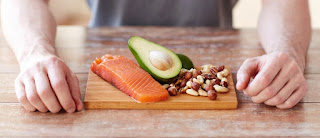Steroids4u.eu is online steroid shop designed for users anabolic steroids. All informations about using, side effects or cycles find on our website steroids4u.eu. Shop is powered by team Steroids4U.eu!
nedeľa 26. decembra 2021
10 foods for better sex | Steroids4U.eu
nedeľa 19. decembra 2021
Which fat burner is the best? | Steroids4U.eu
Which fat burner is the best?
How does a fat burner work?
How and when to dose a fat burner?
FAT BURNERS AND THEIR DISTRIBUTION
Which of the many options is right for me?
nedeľa 12. decembra 2021
Testosterone and its natural production | Steroids4U.eu
Testosterone and its natural production
HOW TO HACK ITS NATURAL CREATION?
8 ways to increase testosterone levels naturally
1. LOSE WEIGHT AND REDUCE SUGAR SUGAR
2. CONSUMATE SUCH ZINC
3. STRENGTH TRAINING
4. VITAMIN D
5. REDUCE STRESS
6. EAT HEALTHY FATS
7. TRIBULUS TERRESTRIS OR ANIMAL ANCHORAGE
HOW DOES TRIBULUS TERRESTRIS WORK?
8. INCREASE INCOME OF BRANCHED BCAAs
nedeľa 5. decembra 2021
What training is best for weight loss? | Steroids4U.eu
What training is best for weight loss?
WHAT TO EXERCISE IF YOU WANT TO LOSE WEIGHT? HOW TO TRAIN FOR EFFECTIVE FAT COMBUSTION?
Why weight training for weight loss?
Does fat burning and strength training?
WHAT STRENGTH TRAINING IS MORE EFFECTIVE FOR WEIGHT LOSS?
Nutrition is a big part of the effectiveness of training and weight loss
PROTEIN FOR REGENERATION AND MUSCLE BUILDING IN FAVOR OF WEIGHT LOSS
BCAA AMINO ACIDS AND L-GLUTAMIN PROTECT MUSCLES AGAINST THEIR DECOMPOSITION
FAT BURNER WILL HELP YOU INCREASE ENERGY EXPENSES
nedeľa 28. novembra 2021
What are prohormones? | Steroids4U.eu
What are prohormones?
Prohormones versus anabolic steroids - Are prohormones banned?
Are prohormones allowed in the US?
Are prohormones safe?
Benefits and effects of prohormones
Prohormone side effects
HOW TO ELIMINATE NEGATIVE EFFECTS
THE MOST IMPORTANT PART IS PCT - POST CYCLE THERAPY
HOW TO PROTECT YOUR LIVER
MOST POPULAR PROHORMONES WITH MINIMUM SIDE EFFECTS
ATD (1,4,6-ANDROSTATRIEN, 3-17-DIONE)
MAX-LMG (3-ETHYL-3-METHOXY-GONA-2,5 (10) DIEN-17-ONE)
DMZ (17B-HYDROXY-2A, 17B-DIMETHYL-5A-ANDROSTAN-3,3-AZINE)
nedeľa 21. novembra 2021
8 activities after each training | Steroids4U.eu
8 activities after each training
1 ALLOW THE BODY TO COOL
2 DRINK SUFFICIENT LIQUIDS
3 DO A TRAINING AFTER TRAINING
4 TAKE A SHOWER AND IMPROVE REGENERATION
Proteins and amino acids
5 DRINK PROTEIN DAY DAY AND AFTER TRAINING
Special proteins
6 RECORD YOUR PROGRESS
7 WEAR COMPRESSED TRAINING CLOTHING
8 PROVIDE A FOAM ROLLER FOAM MASSAGE CYLINDER
nedeľa 14. novembra 2021
Cardio weight training | Steroids4U.eu
Cardio weight training
What cardio training is effective for weight loss
Energy expenditure during cardio exercise
Burn fat even after training in the regeneration phase
DIFFERENCE BETWEEN CARDIO TRAINING LOW AND HIGH INTENSITY
Don't forget about nutrition, which helps the effectiveness of cardio training and weight loss
PROTEIN FOR REGENERATION AND MUSCLE BUILDING IN FAVOR OF WEIGHT LOSS
nedeľa 7. novembra 2021
Why and how much protein | Steroids4U.eu
Why and how much protein
Dosage and intake of proteins
NEGATIVE EFFECT OF HIGH PROTEIN INGREDIENTS
Protein intake for athletes
Is intake of protein drinks important?
The most important is the timing of protein intake and their combination with carbohydrates
Protein after training
nedeľa 31. októbra 2021
Gainer - carbohydrates needed by our body | Steroids4U.eu
Gainer - carbohydrates needed by our body
Glycemic index of carbohydrates
Is the gainer suitable for training people?
CARBOHYDRATER SUPERCOMPENSATION WILL HELP YOU IMPROVE PERFORMANCE
Gainer restores and increases glycogen stores
GLYCOGEN BINDS WATER AND IMPROVES MUSCLE VOLUME
GLYCOGEN EXHAUST
Carbohydrate intake before exercise
Carbohydrate intake during training
WHICH CARBOHYDRATES ARE THE BEST DURING TRAINING?
Carbohydrate intake after training - a means of effective regeneration
GAINER AND ITS CORRECT DOSAGE AFTER TRAINING
nedeľa 24. októbra 2021
Creatine and its effects | Steroids4u.eu
Creatine and its effects
What is creatine
Creatine monohydrate and bound water
Effects of creatine and use in sports
EFFECTS ON SPEED CHARACTER SPORTS:
EFFECTS OF ENDURANCE SPORTS:
MORPHOLOGICAL CHANGES OF THE BODY:
REASONS FOR INCREASING BODY WEIGHT:
Creatine Monohydrate and its dosage
Creatine and side effects
Studies on the effects of creatine
nedeľa 17. októbra 2021
Minerals and trace elements suitable for athletes | Steroids4U.eu
Minerals and trace elements suitable for athletes
Electrolytes needed for athletes
Sodium
Magnesium
Potassium
Calcium
Iron
nedeľa 10. októbra 2021
Baking soda improves athletic performance | Steroids4U.eu
Baking soda improves athletic performance
Baking soda neutralizes lactate (lactic acid salt)
Dosing of baking soda to improve training
Training with the sip of baking soda improves endurance
At a constant load (training process time of 8 weeks) in a test performed at 100% VO2max (maximum oxygen consumption), the baking soda (bicarb) group had a 41% improvement over the saline group. Also, the group that ate baking soda before each workout improved their performance at the anaerobic threshold by 9.6% more than the group that ate saline. Performance at the anaerobic threshold level is one of the most important indicators for determining endurance performance. In this study, an improvement in performance at fatigue time of 41% is indicated. This improvement in performance is precisely due to the neutralization of lactate or free hydrogen ions.














